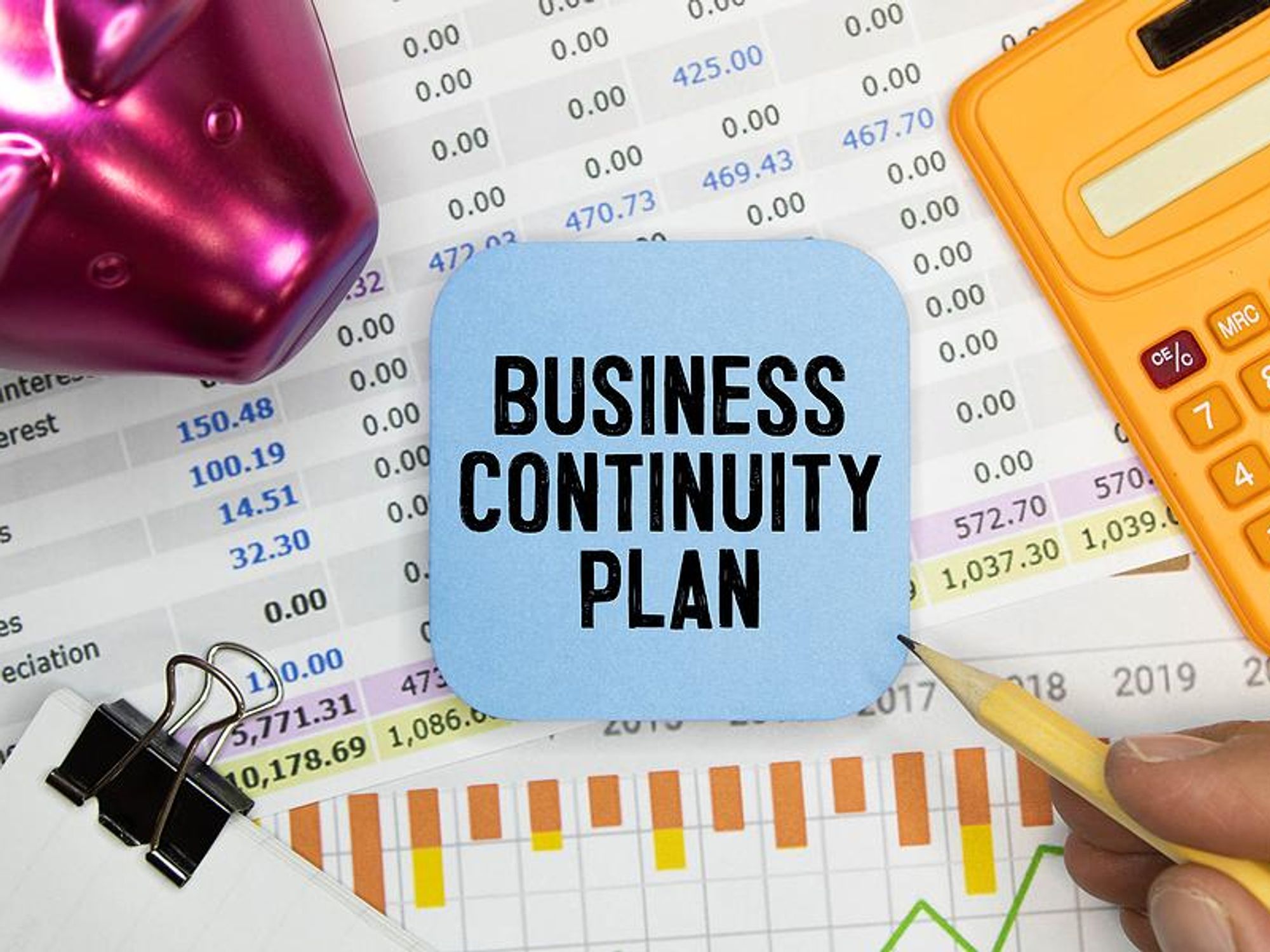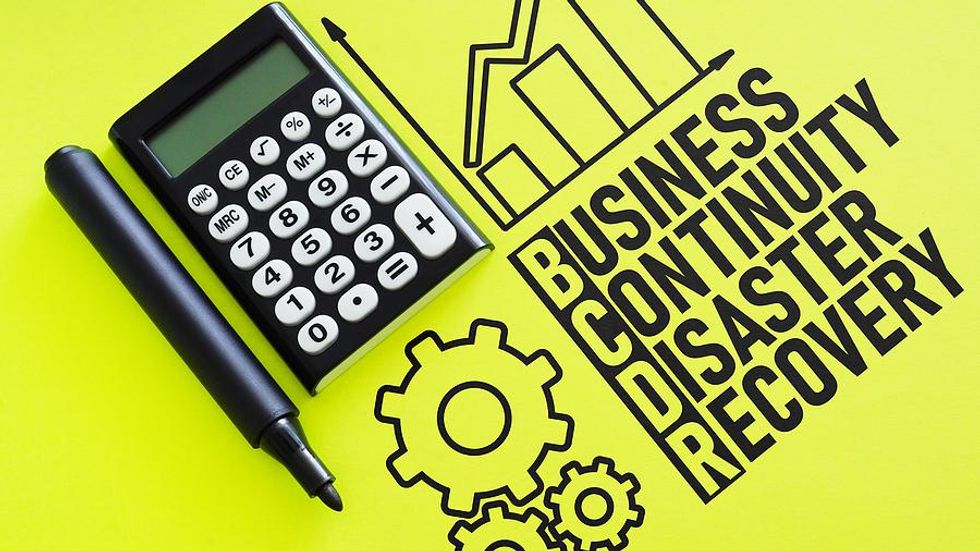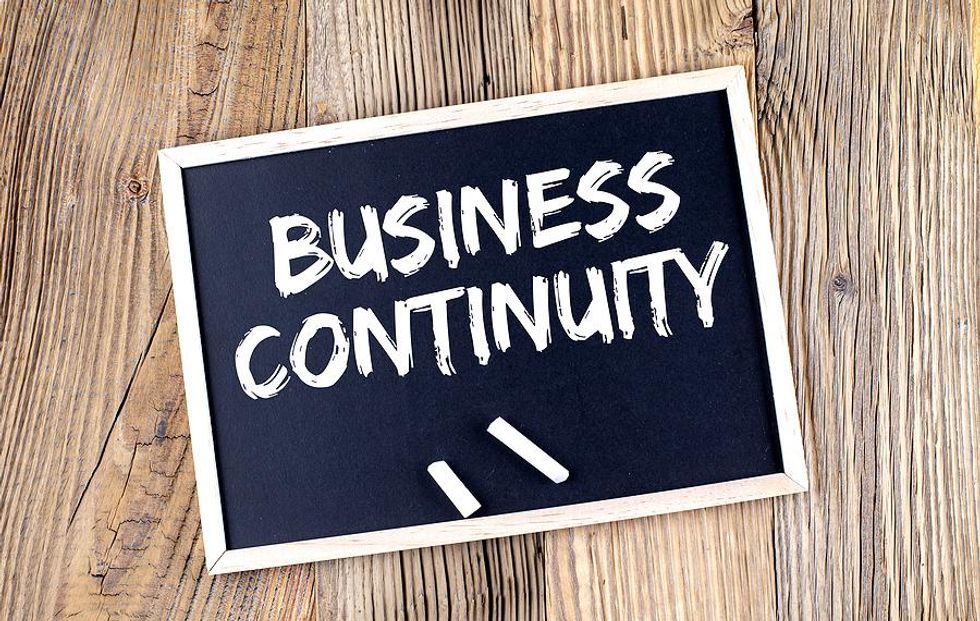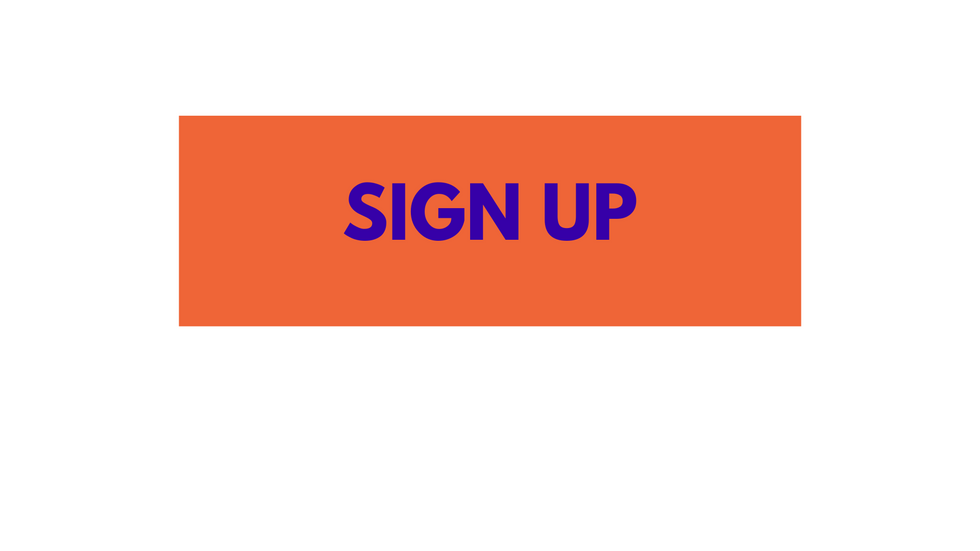
How To Score And Win The Game With A Great Business Continuity Plan!
 Bigstock
{"adCodes": [{"desktop": "\u003cdiv class=\u0027rblad-wit_content\u0027\u003e\u003c/div\u003e", "display": true, "mobile": "\u003cdiv class=\u0027rblad-wit_content\u0027\u003e\u003c/div\u003e", "new_amp": "\u003camp-ad width=336 height=280\n type=\"doubleclick\"\n data-slot=\"/22278042776,22664312254/wit/wit_content\"\n data-multi-size=\"300x250\"\u003e\n\u003c/amp-ad\u003e", "order": 0, "tablet": "\u003cdiv class=\u0027rblad-wit_content\u0027\u003e\u003c/div\u003e"}, {"desktop": "\u003cdiv class=\u0027rblad-wit_content\u0027\u003e\u003c/div\u003e", "display": true, "mobile": "\u003cdiv class=\u0027rblad-wit_content\u0027\u003e\u003c/div\u003e", "new_amp": "\u003camp-ad width=336 height=280\n type=\"doubleclick\"\n data-slot=\"/22278042776,22664312254/wit/wit_content\"\n data-multi-size=\"300x250\"\u003e\n\u003c/amp-ad\u003e", "order": 1, "tablet": "\u003cdiv class=\u0027rblad-wit_content\u0027\u003e\u003c/div\u003e"}, {"desktop": "\u003cdiv class=\u0027rblad-wit_content\u0027\u003e\u003c/div\u003e", "display": true, "mobile": "\u003cdiv class=\u0027rblad-wit_content\u0027\u003e\u003c/div\u003e", "new_amp": "\u003camp-ad width=336 height=280\n type=\"doubleclick\"\n data-slot=\"/22278042776,22664312254/wit/wit_content\"\n data-multi-size=\"300x250\"\u003e\n\u003c/amp-ad\u003e", "order": 2, "tablet": "\u003cdiv class=\u0027rblad-wit_content\u0027\u003e\u003c/div\u003e"}], "adsOrder": [2]}
Bigstock
{"adCodes": [{"desktop": "\u003cdiv class=\u0027rblad-wit_content\u0027\u003e\u003c/div\u003e", "display": true, "mobile": "\u003cdiv class=\u0027rblad-wit_content\u0027\u003e\u003c/div\u003e", "new_amp": "\u003camp-ad width=336 height=280\n type=\"doubleclick\"\n data-slot=\"/22278042776,22664312254/wit/wit_content\"\n data-multi-size=\"300x250\"\u003e\n\u003c/amp-ad\u003e", "order": 0, "tablet": "\u003cdiv class=\u0027rblad-wit_content\u0027\u003e\u003c/div\u003e"}, {"desktop": "\u003cdiv class=\u0027rblad-wit_content\u0027\u003e\u003c/div\u003e", "display": true, "mobile": "\u003cdiv class=\u0027rblad-wit_content\u0027\u003e\u003c/div\u003e", "new_amp": "\u003camp-ad width=336 height=280\n type=\"doubleclick\"\n data-slot=\"/22278042776,22664312254/wit/wit_content\"\n data-multi-size=\"300x250\"\u003e\n\u003c/amp-ad\u003e", "order": 1, "tablet": "\u003cdiv class=\u0027rblad-wit_content\u0027\u003e\u003c/div\u003e"}, {"desktop": "\u003cdiv class=\u0027rblad-wit_content\u0027\u003e\u003c/div\u003e", "display": true, "mobile": "\u003cdiv class=\u0027rblad-wit_content\u0027\u003e\u003c/div\u003e", "new_amp": "\u003camp-ad width=336 height=280\n type=\"doubleclick\"\n data-slot=\"/22278042776,22664312254/wit/wit_content\"\n data-multi-size=\"300x250\"\u003e\n\u003c/amp-ad\u003e", "order": 2, "tablet": "\u003cdiv class=\u0027rblad-wit_content\u0027\u003e\u003c/div\u003e"}], "adsOrder": [2]}
What is a business continuity plan (BCP)?
A business continuity plan (BCP) is a system of prevention and recovery from potential threats to a company. The plan ensures that personnel and assets are protected and can function quickly in a disaster.
Understanding Business Continuity Plans (BCPs)
Bigstock
BCP involves defining any risks affecting the company’s operations, making it an essential part of the organization’s risk management plans. Risks may include natural disasters—fire, flood, or weather-related events—cyber-attacks, and Centers for Disease Control events (COVID-19). Once the risks are identified, the plan should also include the following:
- Determining how the risk will affect operations
- Implementing safeguards and procedures to mitigate the losses
- Testing procedures to ensure they are optimized
- Reviewing the process to make sure that it is up to date
BCPs are an essential part of any business. Threats and disruptions mean a loss of revenue and higher costs, which leads to a drop in profitability. And companies can’t rely on insurance alone because it doesn’t cover all the costs and the customers who move to the competition. It is generally conceived in advance and involves key stakeholders and personnel input.
At The National Football League, A Business Continuity Plan Was In Place In The Event Of A Tragic Event.
Bigstock
When I worked in Football Operations at the NFL, I was heavily involved on the Risk Management Team. Our team knew that the NFL had a plan if a tragic plane crash event eliminated an entire team. The plan was to have an emergency meeting involving all 32 team clubs. Team management would conduct a special draft of the existing 31 clubs, pulling enough players and staff to field a team to continue business operations for the rest of the season.
Business Continuity Plan vs. Disaster Recovery Plan
Bigstock
BCPs and disaster recovery plans are similar; the latter focuses on technology and information technology (IT) infrastructure. BCPs concentrate more on the entire organization, such as customer service and supply chain.
BCPs focus on reducing overall costs or losses, while disaster recovery plans look at technology outages and related expenses. Disaster recovery plans tend to involve only IT personnel—which create and manage the policy. However, BCPs tend to have more personnel trained on the potential procedures.
6 Levels Of Business Continuity Maturity
Bigstock
How mature is your organization when it comes to business continuity? Does your business continuity management (BCM) program crawl, walk, or run? From self-governed to synergistic, we have identified six levels of BCM maturity that most companies fall into.
Immature
Levels 1-3 represent organizations that still need to complete the necessary program basics to launch a sustainable enterprise business continuity management program.
Level 1 – No real plan in place. A wait-and-see approach.
Individual business units and departments can organize or implement their business continuity or disaster recovery efforts. The state of readiness for disruptive events is low across the business enterprise. The business or individual department reacts to disruptive events when they occur. No actual planning is involved: business continuity recovery is reactive rather than proactive.
Level 2 – Departmental: The one and only—you’re in a class alone!
At least one business unit gets it. You have reached Level 2 of BCM maturity if at least one department or business unit has initiated efforts to establish management awareness of the importance of business continuity. A few functions or services have developed and maintain business continuity plans within one or more business continuity disciplines, such as:
- Incident reporting
- Technology protection
- Security mandates
- Business continuity
At Level 2, your organization has at least one internal or external resource assigned to support the business continuity efforts of the participating business units and departments. The state of preparedness may be moderate for participants but remain relatively low across most of the company. Management may see the value of a BCM program, but they are unwilling to make it a priority at this time with minimal executive buy-in.
Level 3 – Cooperative: Moderate preparedness, but on its way to full maturity.
Participating business units and departments have instituted a sophomoric program, mandating at least limited compliance to standardized BCM policy, practices, and procedures to which they have commonly agreed.
- A BCM program office or department has been established, which centrally delivers BCM governance and support services to the participating departments and/or business units.
- Still lacking executive buy-in; senior management has not committed the enterprise to a BCM program.
Maturing
Levels 4-6 represent a definite plan for a maturing enterprise BCM program. If your business achieves Level 4, you are compliant with most standards.
Level 4 – Standards in place: You have climbed to early BCM maturity adulthood.
Congratulations! Your management has arrived on the scene and is committed to the strategic importance of an effective BCM program throughout the organization. In addition, there is an enforceable, practical BCM policy that adopts structure, including procedures and tools for addressing all four business continuity disciplines:
- Incident reporting
- Technology protection
- Security mandates
- Business continuity
Level 5 – Integrated: Almost there!
At Level 5, the company meets all of the requirements of Level 4 that are now implemented throughout the company, adopting continuous quality improvements.
All business departments have completed tests on all elements of their business continuity plan, including their internal and external dependencies.
- Planned methods have proven to be effective.
- Management has bought into crisis management exercises.
- A communications and tracking system exists to sustain a high level of business continuity.
Level 6 – Synergistic: You have reached BCM nirvana!
You not only conquered levels 4 and 5. You own it! As official business continuity gurus, you have:
- Sophisticated business protections are in place and tested successfully.
- Innovative procedures, practices, and technologies are working and functional in the BCM program.
- Why You Need A Disaster Recovery Plan Even If You Have A BCP ›
- 4 Steps To Prepare Employees For The Chaos Of (Unexpected) Emergency ›
- Is Your Organization Prepared For The Next Disaster? ›
- How to create an effective business continuity plan | CIO ›
- Seven Ways to Start Your Business Continuity Plan ›
- What Is a Business Continuity Plan (BCP), and How Does It Work? ›
 {"adCodes": [{"desktop": "\u003cdiv class=\u0027rblad-wit_content\u0027\u003e\u003c/div\u003e", "display": true, "mobile": "\u003cdiv class=\u0027rblad-wit_content\u0027\u003e\u003c/div\u003e", "new_amp": "\u003camp-ad width=336 height=280\n type=\"doubleclick\"\n data-slot=\"/22278042776,22664312254/wit/wit_content\"\n data-multi-size=\"300x250\"\u003e\n\u003c/amp-ad\u003e", "order": 0, "tablet": "\u003cdiv class=\u0027rblad-wit_content\u0027\u003e\u003c/div\u003e"}, {"desktop": "\u003cdiv class=\u0027rblad-wit_content\u0027\u003e\u003c/div\u003e", "display": true, "mobile": "\u003cdiv class=\u0027rblad-wit_content\u0027\u003e\u003c/div\u003e", "new_amp": "\u003camp-ad width=336 height=280\n type=\"doubleclick\"\n data-slot=\"/22278042776,22664312254/wit/wit_content\"\n data-multi-size=\"300x250\"\u003e\n\u003c/amp-ad\u003e", "order": 1, "tablet": "\u003cdiv class=\u0027rblad-wit_content\u0027\u003e\u003c/div\u003e"}, {"desktop": "\u003cdiv class=\u0027rblad-wit_content\u0027\u003e\u003c/div\u003e", "display": true, "mobile": "\u003cdiv class=\u0027rblad-wit_content\u0027\u003e\u003c/div\u003e", "new_amp": "\u003camp-ad width=336 height=280\n type=\"doubleclick\"\n data-slot=\"/22278042776,22664312254/wit/wit_content\"\n data-multi-size=\"300x250\"\u003e\n\u003c/amp-ad\u003e", "order": 2, "tablet": "\u003cdiv class=\u0027rblad-wit_content\u0027\u003e\u003c/div\u003e"}], "adsOrder": [2]}
Are you terrified of screwing up a job interview? Does the thought of writing a cover letter horrify you? Are you scared to network with others? What do you even say, anyway? If you're struggling to overcome your job search fears, this live event is for you.
{"adCodes": [{"desktop": "\u003cdiv class=\u0027rblad-wit_content\u0027\u003e\u003c/div\u003e", "display": true, "mobile": "\u003cdiv class=\u0027rblad-wit_content\u0027\u003e\u003c/div\u003e", "new_amp": "\u003camp-ad width=336 height=280\n type=\"doubleclick\"\n data-slot=\"/22278042776,22664312254/wit/wit_content\"\n data-multi-size=\"300x250\"\u003e\n\u003c/amp-ad\u003e", "order": 0, "tablet": "\u003cdiv class=\u0027rblad-wit_content\u0027\u003e\u003c/div\u003e"}, {"desktop": "\u003cdiv class=\u0027rblad-wit_content\u0027\u003e\u003c/div\u003e", "display": true, "mobile": "\u003cdiv class=\u0027rblad-wit_content\u0027\u003e\u003c/div\u003e", "new_amp": "\u003camp-ad width=336 height=280\n type=\"doubleclick\"\n data-slot=\"/22278042776,22664312254/wit/wit_content\"\n data-multi-size=\"300x250\"\u003e\n\u003c/amp-ad\u003e", "order": 1, "tablet": "\u003cdiv class=\u0027rblad-wit_content\u0027\u003e\u003c/div\u003e"}, {"desktop": "\u003cdiv class=\u0027rblad-wit_content\u0027\u003e\u003c/div\u003e", "display": true, "mobile": "\u003cdiv class=\u0027rblad-wit_content\u0027\u003e\u003c/div\u003e", "new_amp": "\u003camp-ad width=336 height=280\n type=\"doubleclick\"\n data-slot=\"/22278042776,22664312254/wit/wit_content\"\n data-multi-size=\"300x250\"\u003e\n\u003c/amp-ad\u003e", "order": 2, "tablet": "\u003cdiv class=\u0027rblad-wit_content\u0027\u003e\u003c/div\u003e"}], "adsOrder": [2]}
Are you terrified of screwing up a job interview? Does the thought of writing a cover letter horrify you? Are you scared to network with others? What do you even say, anyway? If you're struggling to overcome your job search fears, this live event is for you.We get it. Looking for work can be scary, especially if you’ve been at it for a long time and haven’t gotten any results.
Understanding which fears are getting in the way and how to overcome them will make all the difference. Sometimes you might not be aware of which obstacle is getting in the way of your goals. If you want to overcome these fears once and for all, we invite you to join us!
In this training, you’ll learn how to:
- Utilize strategies for coping with your job search fears
- Be confident in your job search—from writing your resume to networking
- Face your fears and move forward
Join our CEO, J.T. O'Donnell, and Director of Training Development & Coaching, Christina Burgio, for this live event on Wednesday, October 5th at 12 pm ET.
CAN'T ATTEND LIVE? That's okay. You'll have access to the recording and the workbook after the session!
 Read moreShow lessjob search fears
{"customDimensions": {"1":"Executive Community, Jenna Arcand","3":"live events, career events, j.t. o'donnell, jt o'donnell, christina burgio, career advice, career, career growth, professionals, job search, job seekers, job interview, job search tips, job search advice, interview, job interview tips, interview tips, job search fears, overcome job search fears, networking, cover letter, resume, writing a cover letter, job search strategy, job search help, looking for a job, unemployed","2":"cover-letter","4":"09/28/2022"}, "post": {"split_testing": {}, "providerId": 0, "sections": [0, 376490081, 562457120, 370480899, 376490053, 376489574, 376491143, 376489962, 404327439, 376489624, 479660731, 543270555, 473310813, 473333499], "buckets": [], "authors": [21030904, 19836096]} }
Read moreShow lessjob search fears
{"customDimensions": {"1":"Executive Community, Jenna Arcand","3":"live events, career events, j.t. o'donnell, jt o'donnell, christina burgio, career advice, career, career growth, professionals, job search, job seekers, job interview, job search tips, job search advice, interview, job interview tips, interview tips, job search fears, overcome job search fears, networking, cover letter, resume, writing a cover letter, job search strategy, job search help, looking for a job, unemployed","2":"cover-letter","4":"09/28/2022"}, "post": {"split_testing": {}, "providerId": 0, "sections": [0, 376490081, 562457120, 370480899, 376490053, 376489574, 376491143, 376489962, 404327439, 376489624, 479660731, 543270555, 473310813, 473333499], "buckets": [], "authors": [21030904, 19836096]} }
 Bigstock
{"adCodes": [{"desktop": "\u003cdiv class=\u0027rblad-wit_content\u0027\u003e\u003c/div\u003e", "display": true, "mobile": "\u003cdiv class=\u0027rblad-wit_content\u0027\u003e\u003c/div\u003e", "new_amp": "\u003camp-ad width=336 height=280\n type=\"doubleclick\"\n data-slot=\"/22278042776,22664312254/wit/wit_content\"\n data-multi-size=\"300x250\"\u003e\n\u003c/amp-ad\u003e", "order": 0, "tablet": "\u003cdiv class=\u0027rblad-wit_content\u0027\u003e\u003c/div\u003e"}, {"desktop": "\u003cdiv class=\u0027rblad-wit_content\u0027\u003e\u003c/div\u003e", "display": true, "mobile": "\u003cdiv class=\u0027rblad-wit_content\u0027\u003e\u003c/div\u003e", "new_amp": "\u003camp-ad width=336 height=280\n type=\"doubleclick\"\n data-slot=\"/22278042776,22664312254/wit/wit_content\"\n data-multi-size=\"300x250\"\u003e\n\u003c/amp-ad\u003e", "order": 1, "tablet": "\u003cdiv class=\u0027rblad-wit_content\u0027\u003e\u003c/div\u003e"}, {"desktop": "\u003cdiv class=\u0027rblad-wit_content\u0027\u003e\u003c/div\u003e", "display": true, "mobile": "\u003cdiv class=\u0027rblad-wit_content\u0027\u003e\u003c/div\u003e", "new_amp": "\u003camp-ad width=336 height=280\n type=\"doubleclick\"\n data-slot=\"/22278042776,22664312254/wit/wit_content\"\n data-multi-size=\"300x250\"\u003e\n\u003c/amp-ad\u003e", "order": 2, "tablet": "\u003cdiv class=\u0027rblad-wit_content\u0027\u003e\u003c/div\u003e"}], "adsOrder": [2]}
Bigstock
{"adCodes": [{"desktop": "\u003cdiv class=\u0027rblad-wit_content\u0027\u003e\u003c/div\u003e", "display": true, "mobile": "\u003cdiv class=\u0027rblad-wit_content\u0027\u003e\u003c/div\u003e", "new_amp": "\u003camp-ad width=336 height=280\n type=\"doubleclick\"\n data-slot=\"/22278042776,22664312254/wit/wit_content\"\n data-multi-size=\"300x250\"\u003e\n\u003c/amp-ad\u003e", "order": 0, "tablet": "\u003cdiv class=\u0027rblad-wit_content\u0027\u003e\u003c/div\u003e"}, {"desktop": "\u003cdiv class=\u0027rblad-wit_content\u0027\u003e\u003c/div\u003e", "display": true, "mobile": "\u003cdiv class=\u0027rblad-wit_content\u0027\u003e\u003c/div\u003e", "new_amp": "\u003camp-ad width=336 height=280\n type=\"doubleclick\"\n data-slot=\"/22278042776,22664312254/wit/wit_content\"\n data-multi-size=\"300x250\"\u003e\n\u003c/amp-ad\u003e", "order": 1, "tablet": "\u003cdiv class=\u0027rblad-wit_content\u0027\u003e\u003c/div\u003e"}, {"desktop": "\u003cdiv class=\u0027rblad-wit_content\u0027\u003e\u003c/div\u003e", "display": true, "mobile": "\u003cdiv class=\u0027rblad-wit_content\u0027\u003e\u003c/div\u003e", "new_amp": "\u003camp-ad width=336 height=280\n type=\"doubleclick\"\n data-slot=\"/22278042776,22664312254/wit/wit_content\"\n data-multi-size=\"300x250\"\u003e\n\u003c/amp-ad\u003e", "order": 2, "tablet": "\u003cdiv class=\u0027rblad-wit_content\u0027\u003e\u003c/div\u003e"}], "adsOrder": [2]}
If you read my article from last week, I talked about COVID-19 career PTSD. There are so many people who are stuck in their careers right now and can't figure out what to do next. I know from 20 years of career coaching that the answer lies in figuring out whether you need a job, a career, or a calling.
The Difference Between A Job, A Career, And A Calling @j.t.odonnell Do you need a JOB, CAREER or CALLING right now???? @j.t.odonnell #careers#jobs#jobtok#careertok#tiktok#howto#dreamjob#workitdaily♬ original sound - J.T. O'DonnellA job is something that just pays the bills. It's serving a singular purpose. You don't feel any identity tied to it. A really great example of people who work jobs would be Olympic athletes. A lot of them will work at places like Home Depot because they can just go in and do the job. A job like that has flexible hours, which is perfect for them because their main pursuit is becoming an Olympic athlete. Or maybe you've got something going on with family right now that's way more important than feeling connected to the work that you do. Whatever the reason, you just need a job where you can punch in and collect a paycheck.
Then there's a career. I would say the majority of people fall into this category. These are people who want work to be meaningful to them. We've seen a big shift in this as a result of the pandemic. People are becoming purpose-driven professionals who don't just want to do a job. They want the work that they do to have some sort of impact or meaning or at least make them feel satisfied. Careers support intrinsic motivation, meaning you do the work because of the connection that you feel to it, whether it's the connection to the work itself or maybe to the organization and what they do. And that becomes very important for satisfaction. We have to do work that works for us. So when you know you want a career, you have to pursue it differently. You have to become a job shopper. That's how you'll find the right career for you.
The last category is a calling. Very few people fall into this type of work. This is when what you do becomes a large part of your identity. Finding a calling happens when people get super passionate about solving a problem, alleviating a pain, and creating more happiness. I have a calling. I left corporate America 20 years ago because I got very frustrated about the fact that the people that we were recruiting that we weren't able to place could have secured better jobs if they had received coaching. So I became a career coach, and for the last 20 years, I've been trying to disrupt that industry and build an online platform for people. It's come at a sacrifice. I've traded out a lot of hobbies and recreation to put toward work. Also, financially, this isn't overly lucrative. But I'm doing it because it makes a difference. And that's important to me. That's a calling. It's not for everyone, but it might be for you.
So which one do you need right now? A job, a career, or a calling?
Need more help finding a job, career, or calling?
I'd love it if you signed up for Work It Daily's Event Subscription! I look forward to answering all of your career questions in our next live event!
Read moreShow lessjob career or calling {"customDimensions": {"1":"J.T. O'Donnell","3":"job career or calling, job, career, calling, work, types of work, covid-19, pandemic, motivation, intrinsic motivation, ptsd, purpose, satisfaction, connection, meaning, career advice, career tips, career help","2":"unemployment","4":"12/05/2022"}, "post": {"split_testing": {}, "providerId": 0, "sections": [0, 404327439, 479660731, 473333499, 543270555, 473310813], "buckets": [], "authors": [19549412]} } Community Why Taking Good Notes Matters In Business Jim BlackDecember 05, 2022 Bigstock
{"adCodes": [{"desktop": "\u003cdiv class=\u0027rblad-wit_content\u0027\u003e\u003c/div\u003e", "display": true, "mobile": "\u003cdiv class=\u0027rblad-wit_content\u0027\u003e\u003c/div\u003e", "new_amp": "\u003camp-ad width=336 height=280\n type=\"doubleclick\"\n data-slot=\"/22278042776,22664312254/wit/wit_content\"\n data-multi-size=\"300x250\"\u003e\n\u003c/amp-ad\u003e", "order": 0, "tablet": "\u003cdiv class=\u0027rblad-wit_content\u0027\u003e\u003c/div\u003e"}, {"desktop": "\u003cdiv class=\u0027rblad-wit_content\u0027\u003e\u003c/div\u003e", "display": true, "mobile": "\u003cdiv class=\u0027rblad-wit_content\u0027\u003e\u003c/div\u003e", "new_amp": "\u003camp-ad width=336 height=280\n type=\"doubleclick\"\n data-slot=\"/22278042776,22664312254/wit/wit_content\"\n data-multi-size=\"300x250\"\u003e\n\u003c/amp-ad\u003e", "order": 1, "tablet": "\u003cdiv class=\u0027rblad-wit_content\u0027\u003e\u003c/div\u003e"}, {"desktop": "\u003cdiv class=\u0027rblad-wit_content\u0027\u003e\u003c/div\u003e", "display": true, "mobile": "\u003cdiv class=\u0027rblad-wit_content\u0027\u003e\u003c/div\u003e", "new_amp": "\u003camp-ad width=336 height=280\n type=\"doubleclick\"\n data-slot=\"/22278042776,22664312254/wit/wit_content\"\n data-multi-size=\"300x250\"\u003e\n\u003c/amp-ad\u003e", "order": 2, "tablet": "\u003cdiv class=\u0027rblad-wit_content\u0027\u003e\u003c/div\u003e"}], "adsOrder": [2]}
Bigstock
{"adCodes": [{"desktop": "\u003cdiv class=\u0027rblad-wit_content\u0027\u003e\u003c/div\u003e", "display": true, "mobile": "\u003cdiv class=\u0027rblad-wit_content\u0027\u003e\u003c/div\u003e", "new_amp": "\u003camp-ad width=336 height=280\n type=\"doubleclick\"\n data-slot=\"/22278042776,22664312254/wit/wit_content\"\n data-multi-size=\"300x250\"\u003e\n\u003c/amp-ad\u003e", "order": 0, "tablet": "\u003cdiv class=\u0027rblad-wit_content\u0027\u003e\u003c/div\u003e"}, {"desktop": "\u003cdiv class=\u0027rblad-wit_content\u0027\u003e\u003c/div\u003e", "display": true, "mobile": "\u003cdiv class=\u0027rblad-wit_content\u0027\u003e\u003c/div\u003e", "new_amp": "\u003camp-ad width=336 height=280\n type=\"doubleclick\"\n data-slot=\"/22278042776,22664312254/wit/wit_content\"\n data-multi-size=\"300x250\"\u003e\n\u003c/amp-ad\u003e", "order": 1, "tablet": "\u003cdiv class=\u0027rblad-wit_content\u0027\u003e\u003c/div\u003e"}, {"desktop": "\u003cdiv class=\u0027rblad-wit_content\u0027\u003e\u003c/div\u003e", "display": true, "mobile": "\u003cdiv class=\u0027rblad-wit_content\u0027\u003e\u003c/div\u003e", "new_amp": "\u003camp-ad width=336 height=280\n type=\"doubleclick\"\n data-slot=\"/22278042776,22664312254/wit/wit_content\"\n data-multi-size=\"300x250\"\u003e\n\u003c/amp-ad\u003e", "order": 2, "tablet": "\u003cdiv class=\u0027rblad-wit_content\u0027\u003e\u003c/div\u003e"}], "adsOrder": [2]}
Why Does Taking Good Notes Matter?
I graduated college and graduate school many years ago. I took notes like crazy when I was in school, and they were my own cryptic code of the subject at hand. I thought I was “done” with this style of capturing information.
To this day, I keep a notebook within arms reach of me at work. Each meeting, phone conversation, and even some personal conversations get recorded in my notebook. Much of the time, I capture brief elements or tasks from a discussion. Other times, I have long volumes of knowledge written on the page. In my desk are many years of notebooks filled with these tidbits of past conversations.
School’s out, so why do I keep doing this?
My Memory Is Not What It Used To Be…
Bigstock
Let’s face facts. As I age, my memory declines. With stress, I forget many things discussed during a work day. Do I remember what I ate last week? I do not always remember what I had for breakfast this morning. Life throws so much information in our direction, how can we remember everything?
Write it down. Transfer the information from the short term to the long term. Allow pen and paper to serve as your memory.
I will misquote this… during an interview, Albert Einstein was asked for his phone number. He rose from his seat, opened a phone book, and pointed to his number. When asked why the smartest man in the world did not know his own phone number, the physicist answered, "Why would I remember something trivial when it is written down?"
Use note-taking for your long-term memory support. If it is written down, the information can be referenced at any time with minimal need for recollection.
My Notes Have Saved My Behind More Times Than I Can Count!
Bigstock
Ever disagree with a customer on something said in a meeting? Did your boss recall a conversation differently than you? Do colleagues neglect to follow through on a task agreed upon? Do you get into disputes over dates, times, and actions from a meeting?
Remember the old notebooks? Just last week, I found meeting minutes from a discussion nearly two years ago, and I was able to show attendance at the meeting and a skeleton of the discussion. My customer denied being present, changed the terms of our agreement, and challenged me on the validity of our claim. Looking in the notebook, I showed he was present and agreed to bullet points in the conversation. We still needed to find a consensus between our perspectives; however, I was able to begin at a basic agreement the discussion had taken place.
Because my memory was not clear, and my customer’s memory was not either, my notes clarified our position. Dates, facts, attendance, and action items were stored for my retrieval.
Does Media Matter? (Written vs. Electronic)
Bigstock
For me, the answer is yes. I am a visual learner first and a tactile learner second. I need to have the physical motion of writing to help me reinforce a concept, capture knowledge, or learn a skill. Seeing it and making it real works well for me.
I have often wondered about the tablets which capture handwriting, and I have yet to make the jump. As a former PalmPilot user, I learned quickly that electronic capture did not work for me. Taking typed notes is a challenge as a self-taught typist. When I am creating the idea in my head, I can type very well. When I am transposing someone else’s thoughts, I am much slower than writing.
Use what works best for your learning style. The media only matters if it helps with comprehension. Auditory learners may record everything in their phone’s voice memos. Visual learners may benefit from a tablet to doodle their conclusions. Tactile people may prefer pen to paper like me. Use many techniques. Simply take the notes!
Tips And Tricks For Business Notes
Bigstock
Here are a few things which work for me. I suggest you try them and manipulate the ideas to fit your needs. Use these as my guidelines to help shape your own unique system.
- Date everything. Always put a date (and time) in the header. This date will help you index when searching for information.
- For meetings, record attendees. Make sure you capture as many of the participants in the conversation as possible. For accountability, know who was present.
- Title the subject. Identify specifically what was discussed in the conversation. Again, this habit defines the context and helps find the subject when searching.
- Use a symbol to designate actions needed. I “star” everything which is an actionable item for me. I can review my notes and easily find these tasks in the margin. Use something memorable to you—circle the task, highlight it, make it stand out on the page!
- Do not use full sentences. Use shorthand to help with speed.
- Do not capture EVERY SINGLE WORD. Focus on key points and elaborate as needed.
- Use a notebook or a single file for notes. Two dozen Post-it ® notes on your desk or 15 sheets of paper are ineffective. Limit the notes to a single source for archive. Multiple sources will increase the chaos!

Bigstock
Professionals take a lot of training, spend years in school, or develop their expertise over many years of effort. I would like to believe this information is common sense everyone should know.
In my observations, many professionals do not have this skill nor prepare for it. Too many people walk into meetings with nothing in hand. Some bring phones and text or surf while meetings occur. Others grab the Post-it ® notes and decorate their desks with the colorful squares.
We all learn differently and have unique styles. My comments in this article reflect how I need to work, and I merely recommend ideas that have worked for me. Sometimes simply reading about another’s successful actions is enough to spark new behavior in yourself. My goal is to share my ideas to help someone struggling to make a modest improvement in their effectiveness.
If one person walks away with a general idea of how to improve their memory at work (or home), my message is well received. For others, they may not see value in my note-taking message. For those who took the time to read, I can only hope my recommendation will help you be more effective and efficient in recalling details. My note-taking has certainly helped me over time, and I hope it may be able to help you as well.
Thanks for reading, and make a note!
Read moreShow lesstaking notes at work {"customDimensions": {"1":"Executive Community, Jim Black","3":"taking notes at work, note-taking, business, work, taking notes, information, meetings, meeting notes","2":"community","4":"12/05/2022"}, "post": {"split_testing": {}, "providerId": 0, "sections": [0, 544324100, 544398570, 479660731, 473310813, 473333499], "buckets": [], "authors": [21030904, 25315544]} } Featured Job, Career, Or Calling: Which One Do You Need?
{"customDimensions": {"1":"J.T. O'Donnell","3":"job career or calling, job, career, calling, work, types of work, covid-19, pandemic, motivation, intrinsic motivation, ptsd, purpose, satisfaction, connection, meaning, career advice, career tips, career help","2":"unemployment","4":"12/05/2022"}, "post": {"split_testing": {}, "providerId": 0, "sections": [0, 404327439, 479660731, 473333499, 543270555, 473310813], "buckets": [], "authors": [19549412]} }
Job, Career, Or Calling: Which One Do You Need?
{"customDimensions": {"1":"J.T. O'Donnell","3":"job career or calling, job, career, calling, work, types of work, covid-19, pandemic, motivation, intrinsic motivation, ptsd, purpose, satisfaction, connection, meaning, career advice, career tips, career help","2":"unemployment","4":"12/05/2022"}, "post": {"split_testing": {}, "providerId": 0, "sections": [0, 404327439, 479660731, 473333499, 543270555, 473310813], "buckets": [], "authors": [19549412]} }
 Now Hiring: Remote SysOps Engineer
{"customDimensions": {"1":"Work It Daily, Kinsta \u00ae","3":"kinsta, hiring, remote jobs, remote work, remote workforce, remote companies hiring, remote companies 2021, sysops engineer, sysops engineer jobs","2":"popular","4":"05/18/2021"}, "post": {"split_testing": {}, "providerId": 0, "sections": [370480899, 545998439, 545998440, 473310812, 376489962, 526353713, 545658354, 548352055, 548352058, 543270555, 473333499, 473310813], "buckets": [], "authors": [19548593, 21891195]} }
Now Hiring: Remote SysOps Engineer
{"customDimensions": {"1":"Work It Daily, Kinsta \u00ae","3":"kinsta, hiring, remote jobs, remote work, remote workforce, remote companies hiring, remote companies 2021, sysops engineer, sysops engineer jobs","2":"popular","4":"05/18/2021"}, "post": {"split_testing": {}, "providerId": 0, "sections": [370480899, 545998439, 545998440, 473310812, 376489962, 526353713, 545658354, 548352055, 548352058, 543270555, 473333499, 473310813], "buckets": [], "authors": [19548593, 21891195]} }
 3 Important Career Lessons Learned On And Off The Field
{"customDimensions": {"1":"Executive Community, J.T. O'Donnell","3":"career change, entrepreneur, entrepreneurship, career, career challenges, overcoming career challenges, personal branding, personal development, professional development, professional growth, success, career success, pro athletes, tom brady, chris gronkowski, nfl, tiktok, social media strategy, social media, career growth","2":"popular","4":"02/10/2021"}, "post": {"split_testing": {}, "providerId": 0, "sections": [0, 370480899, 473333499, 376489962, 526353713, 376489624, 479660731], "buckets": [], "authors": [21030904, 19549412]} }
3 Important Career Lessons Learned On And Off The Field
{"customDimensions": {"1":"Executive Community, J.T. O'Donnell","3":"career change, entrepreneur, entrepreneurship, career, career challenges, overcoming career challenges, personal branding, personal development, professional development, professional growth, success, career success, pro athletes, tom brady, chris gronkowski, nfl, tiktok, social media strategy, social media, career growth","2":"popular","4":"02/10/2021"}, "post": {"split_testing": {}, "providerId": 0, "sections": [0, 370480899, 473333499, 376489962, 526353713, 376489624, 479660731], "buckets": [], "authors": [21030904, 19549412]} }
 How Ex-NFL Player, Chris Gronkowski, Is Using Social Media To Change Careers
{"customDimensions": {"1":"Executive Community, J.T. O'Donnell","3":"2010, Barstool, camera phone, career growth and development, career growth opportunities, chrisgronkowski, cowboys, dallascowboys, dinner, football, free, gronkspike, iceshaker, investor, nfl, nflfootball, nflplayer, nflplayers, nflworkout, payday, rookie, salary, sharing, sharktank, tic toc, tic tok, tick tock, ticktock, tictok, tik tok, tiktok, tiktok.com, trade, trainingcamp, upload, video, video phone, weighin, youtube.com, \u0442\u0438\u043a \u0442\u043e\u043a, \u30c6\u30a3\u30c3\u30af\u30c8\u30c3\u30af, chris gronkowski","2":"popular","4":"01/29/2021"}, "post": {"split_testing": {}, "providerId": 0, "sections": [0, 370480899, 473333499, 526353713, 376489624, 479660731], "buckets": [], "authors": [21030904, 19549412]} }
How Ex-NFL Player, Chris Gronkowski, Is Using Social Media To Change Careers
{"customDimensions": {"1":"Executive Community, J.T. O'Donnell","3":"2010, Barstool, camera phone, career growth and development, career growth opportunities, chrisgronkowski, cowboys, dallascowboys, dinner, football, free, gronkspike, iceshaker, investor, nfl, nflfootball, nflplayer, nflplayers, nflworkout, payday, rookie, salary, sharing, sharktank, tic toc, tic tok, tick tock, ticktock, tictok, tik tok, tiktok, tiktok.com, trade, trainingcamp, upload, video, video phone, weighin, youtube.com, \u0442\u0438\u043a \u0442\u043e\u043a, \u30c6\u30a3\u30c3\u30af\u30c8\u30c3\u30af, chris gronkowski","2":"popular","4":"01/29/2021"}, "post": {"split_testing": {}, "providerId": 0, "sections": [0, 370480899, 473333499, 526353713, 376489624, 479660731], "buckets": [], "authors": [21030904, 19549412]} }
PropertySea is the ultimate platform for all your real estate needs. Whether you're searching for your dream home, looking to sell or rent your property, or seeking investment opportunities, PropertySea is your one-stop destination.
Whether you're a homebuyer, seller, renter, or investor, PropertySea is your trusted partner in the real estate market. Discover a world of possibilities, connect with expert agents, and make your property dreams a reality. Start your real estate journey with PropertySea today and experience the convenience, efficiency, and reliability of our comprehensive platform.
Originally posted on: https://www.workitdaily.com/business-continuity-plan
